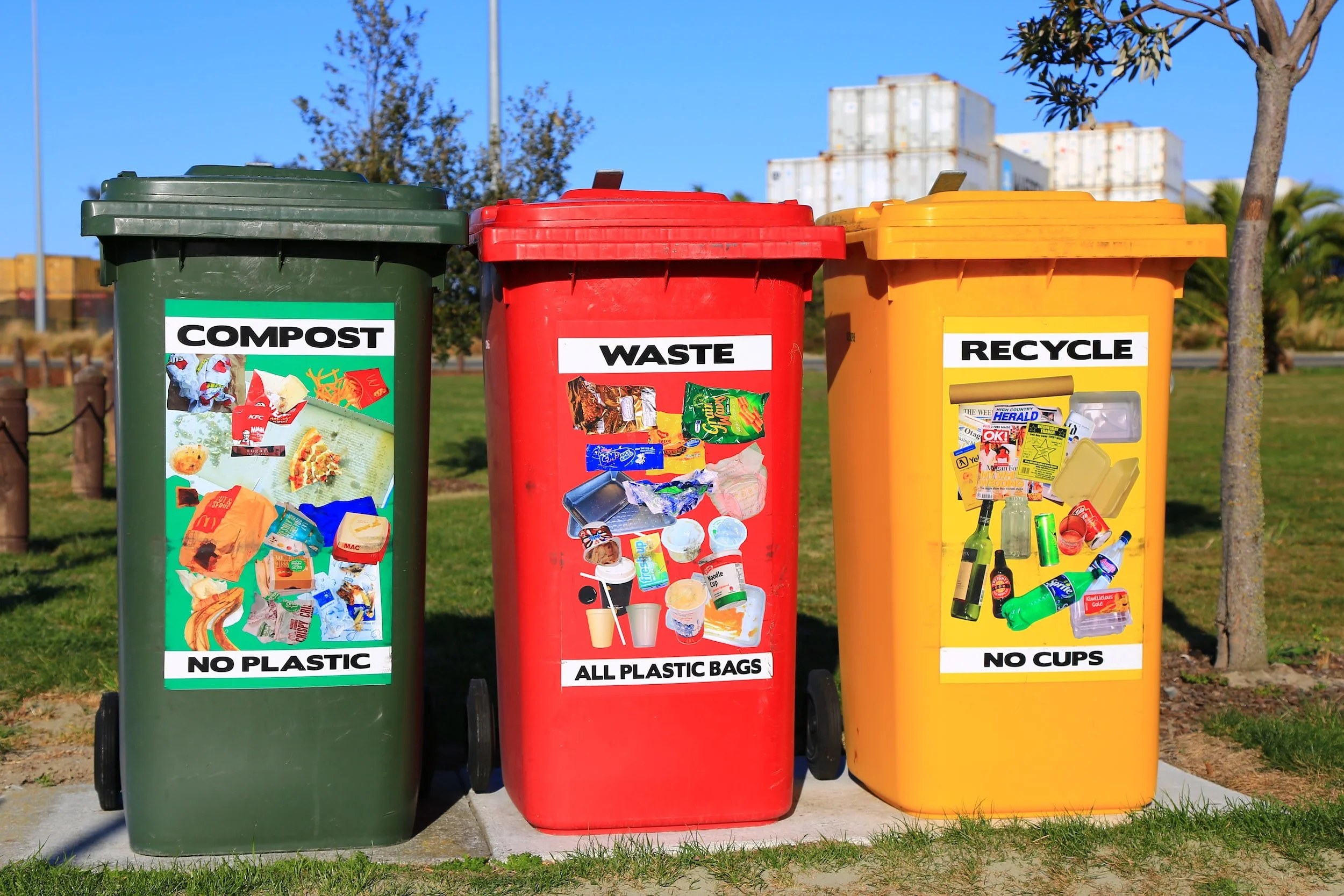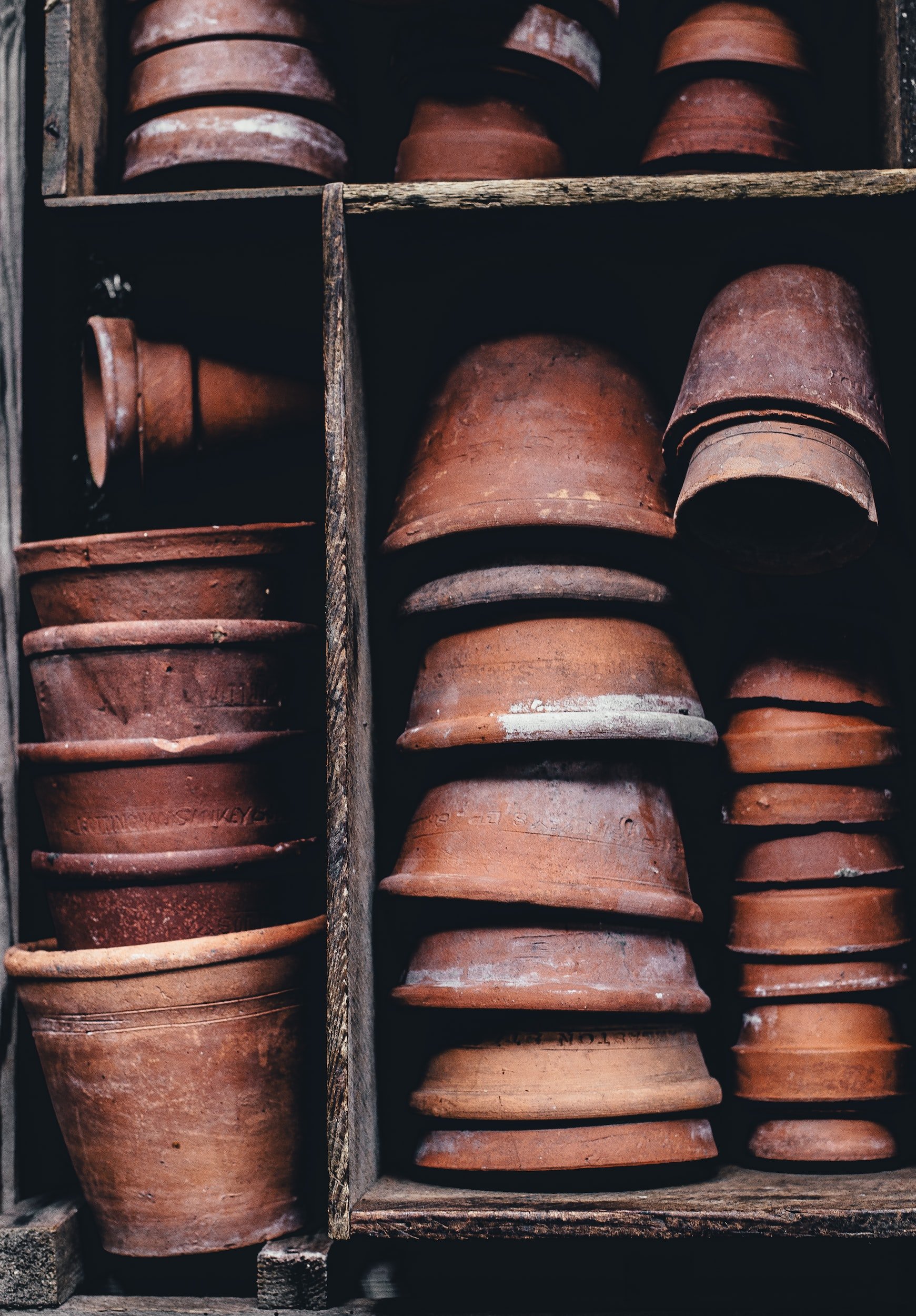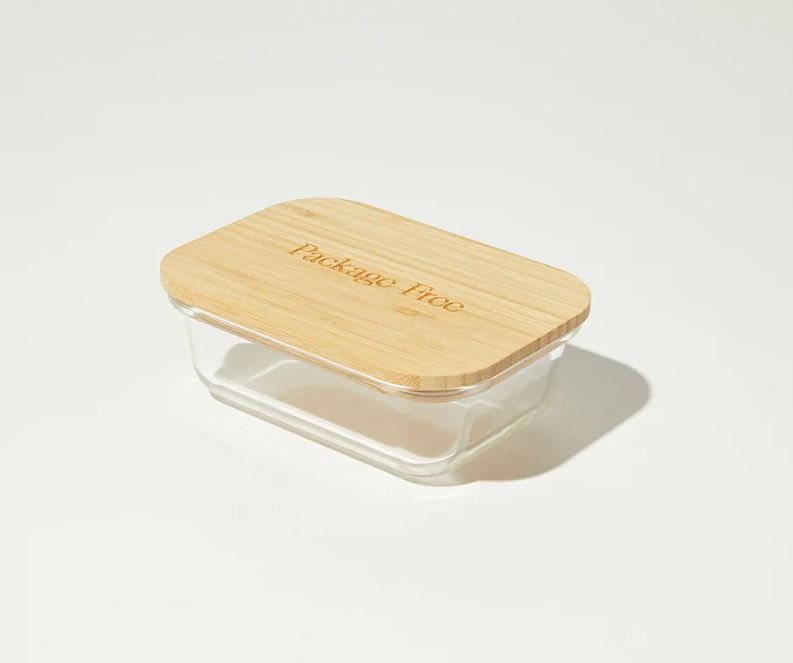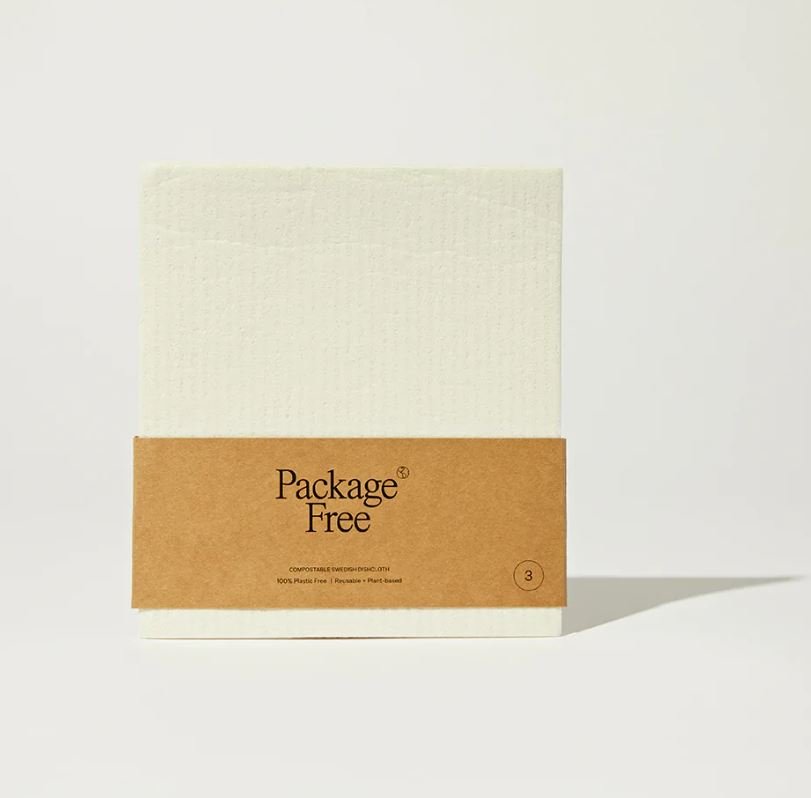BACKYARD GARDENING MADE SIMPLE
10 Zero Waste Gardening Tools and Ideas
In all areas of our lives, from our hobbies to our habits, we have opportunities to either increase or reduce our impact on the environment and the effects of climate change. While the burden of fixing our climate crisis should not fall on the individual but the corporations that are responsible for the vast majority of damage done, every little bit you are able to do can help. The best part is, most of the ways we can reduce or eliminate our waste in gardening come at no additional effort or cost - it simply comes down to intentionally deciding on the plastic free or secondhand option instead (which is often cheaper anyway)
The Cottage Peach is reader-supported. When you purchase through links on our site, we may earn an affiliate commission at no additional cost to you. All opinions are our own.
In all areas of our lives, from our hobbies to our habits, we have opportunities to create or reduce our impact on the environment and the effects of climate change. While the burden of fixing our climate crisis should not fall on the individual but the corporations that are responsible for the vast majority of damage done, every little bit you are able to do can help. The best part is, most of the ways we can reduce or eliminate our waste in gardening come at no additional effort or cost - it simply comes down to intentionally deciding on the plastic free or secondhand option instead (which is often cheaper anyway)
What does zero waste mean? What is zero waste?
Zero waste is the principle or practice of sustainable living in which the participant commits to reducing or eliminating streams of waste in various aspects of their lives. This can include reducing water consumption, shopping the bulk food bins or repurposing household items at the end of their “useful” life, to name a few.
The concept of zero waste living can sound intimidating or difficult, but more often than not it is nothing more than a simple shift in your awareness and intention. It also does not mean you must completely eliminate all sources of waste in your life - despite the word “zero”, it is not an all or nothing game.
What kinds of waste are there?
Waste comes in all forms, in all areas of our lives. While the majority of waste filling landfills is produced by industrial operations, domestically, we waste food, water, energy, paper, packaging, furniture, clothes, computers, tires, appliances and more in unimaginable amounts. Americans send nearly 150 million tons of trash to landfills each year instead of recycling it, and we’re running out of space.
Where does waste go?
Waste goes into landfills, which typically cause the destruction of natural wildlife habitats in their construction. They are often lined in plastic. The average landfill size is 600 acres. With over 3,000 active landfills in the United States, as much as 1,800,000 acres of habitat have been lost. When waste breaks down in a landfill, methane gas is released. Methane is 84 times more effective at absorbing the sun’s heat than carbon dioxide, making it one of the most potent greenhouse gases and a huge contributor to climate change.
Food can’t break down in a landfill
Food waste needs oxygen in order to break down properly. Due to the fact that landfills are so tightly packed with waste of all kinds, food waste is often suffocated to the point where it cannot break down into the individual nutrients it is composed of and be reabsorbed into the earth, regenerating the soil. What happens if food doesn’t break down? It rots. When food rots in a landfill, it produces huge amounts of methane — a greenhouse gas at least 28 times as potent as carbon dioxide.
Here’s what the FDA has to say about the impacts of food waste:
“Food loss and waste is estimated to be roughly one third of the food intended for human consumption in the United States. When food is discarded, all inputs used in producing, processing, transporting, preparing, and storing discarded food are also wasted. Food loss and waste also exacerbates the climate change crisis with its significant greenhouse gas (GHG) footprint. Production, transportation, and handling of food generate significant Carbon Dioxide (CO2) emissions and when food ends up in landfills, it generates methane, an even more potent greenhouse gas.”
This is why zero waste food is so important, and we can do this easily with composting! (More information on that below)
Ways to incorporate zero waste principles into your garden
We live in an era that romanticizes convenience in all forms. Of course it’s easy to see where these ideas might apply to a zero waste home, but this also extends to our hobbies, including gardening. You can’t visit the local garden center without being bombarded with gadgets and tools promising to make garden tasks easier, faster or better. But the fact is that humans have been gardening successfully for hundreds of years, without many of these interventions. Certainly there are tools that make gardening more accessible for those of us with chronic illness or pain that find it challenging, but here I’m primarily referring to situations where there is a perfectly good alternative with less packaging, that is made without plastic which can never break down once it reaches the end of its useful life.
I’m sure you’ve heard this before, but the key concepts behind achieving a zero waste lifestyle are to reduce, recycle and repurpose. But how do you apply these concepts in the garden?
I recommend intentionally shifting your mindset.
When something breaks and needs to be replaced in the garden, first ask yourself “Can this be repaired?” if not, ask “can it be repurposed?” and if you still cannot find a use for the broken item, ask “can it be recycled?”
With these three simple questions, you’ll be well on your way to intentionally incorporating zero waste practices into your garden routine. But here’s a few ideas for zero waste gardening to get you started:
Reuse food containers for produce storage
Pop your zucchini in an old bread bag, pureed pumpkin in salsa jars and fresh picked berries in plastic yogurt tubs - all of which make excellent replacements for disposable freezer bags or plastic wrap. You’re keeping those items out of the waste stream AND preventing the addition of another piece of waste from the disposable products you skip using.
Wrap produce in damp cloths
Not only are you avoiding the use of disposable cling wrap, you’ll extend the life of your vegetables and avoid having to send them to the compost all together. In fact, learning the best storage methods for every fruit or vegetable that you grow is the best way to reduce food waste.
Save shower water for plants
Before you close this page in disgust, I’m not saying you have to save your DIRTY shower water. But how long are you running that shower before you even get in? Simply place an empty 5 gallon bucket under the faucet until you’re ready to get in, then pour that excess water on your garden beds when you go out to water.
Make vegetable stock
By being proactive and saving any cut offs from your carrot and onion ends, as well as any whole vegetables you won’t be able to use before they go bad and freezing until you have a full gallon bag to work with you can make simple and nutritious vegetable stock - just add your collected scraps to a pot of boiling water and simmer covered for 1-4 hours.
Compost
Landfills lack the oxygen that compostable items need to fully decompose. By putting biodegradable items into the compost instead of the trash, you can save huge amounts of waste from the landfill. We have an outdoor compost pile as well as Lomi - an indoor countertop composter that allows us to compost all sorts of things we couldn’t put in a regular compost pile including meat, dairy and bioplastic packaging which would take years to fully decompose in a traditional compost pile.
Save cardboard for kindling/weed barrier
Any child who has ever built a fort out of a box will tell you that cardboard has infinite uses, and the garden is no exception.
Buy second hand garden clothing/tools
When you choose second hand gardening tools, hats and aprons you’re keeping precious items from the landfill, giving them a new life and best of all these items have generally already withstood the test of time, so you can count on them to last.
Take care of what you have to make tools last
Once you have those second hand tools, make sure and do your research on the best way to maintain them. Click here for my post all about the best ways to maintain your gardening tools.
Repurpose branches for stakes/trellis
Nobody likes a plastic trellis, and even the pretty wooden ones available at garden centers hardly last me one season. Building a natural trellis using sticks and branches is simple and rewarding, and fits in well with the natural landscape you’re working in. Plus, at the end of the year you can just chuck them back in the woods if they’re broken or place aside to reuse again.
Use jute twine instead of nylon
According to GoodOnYou, producing nylon creates nitrous oxide, a greenhouse gas that is 300 times more potent than carbon dioxide…Manufacturing nylon is a very thirsty process; large amounts of water are used for cooling the fibers, which can be a source of environmental contamination and pollution. Treehugger says that nylon production is associated with the same negative environmental impacts as fossil fuels, including exacerbating the climate crisis. It’s safe to say that nylon is definitely not biodegradable, unlike its natural cousin jute twine. Because jute is compostable and biodegradable and requires fewer resources to grow and produce, it is considered a future-proof sustainable fiber.
I hope this post all about zero waste gardening ideas was helpful! what tricks do you use in the garden to reduce, reuse and repurpose? Comment below and let me know!
Eco Friendly Gift Ideas
I know I’m not the only one who struggles after the holidays are over to try and absorb all of the generous gifts into our home and our lives. As much as I’m grateful for the thought, and know that I am privileged to be loved by so many people who want to express that love through gifts, it is a challenge when the gifts themselves don’t fit into my life. An eco-friendly gift, however, will always bring me joy and be a useful addition to my home.
The Cottage Peach is reader-supported. When you purchase through links on our site, we may earn an affiliate commission at no additional cost to you. All opinions are our own.
Holiday waste is a huge problem, both for our budgets and the environment. Americans spent around $15.2 billion on unwanted holiday gifts in 2019, and 4% of them ended up in the trash. Think about it - how many trash bags have you probably filled with just wrapping paper in your life? A lot of it can’t be recycled or composted even if we wanted to because it uses shiny plastic coatings or glitter that won’t break down. This is a huge problem that we can easily avoid by simply changing some habits and using fabric or kraft paper wrapping instead. The plus side is fabric wrapping can be reused year after year and kraft paper is totally recyclable and compostable!
That number doesn’t even include all of the wasted packaging and wrapping materials that end up in landfills. Each year Americans alone use 4.6 million pounds of wrapping paper valued at over seven billion dollars. Fifty percent of that wrapping paper ends up in a landfill. That's 2.3 million pounds of used wrapping paper clogging up landfills.
I know I’m not the only one who struggles after the holidays are over to try and absorb all of the generous gifts into our home and our lives. As much as I’m grateful for the thought, and know that I am privileged to be loved by so many people who want to express that love through gifts, it is a challenge when the gifts themselves don’t fit into my life. An eco-friendly gift, however, will always bring me joy and be a useful addition to my home.
For a truly zero waste eco friendly gift idea, consider an experience instead. This can be anything from paint night to skydiving, a museum membership, massage or a baking class. Experience gifts allow you to deepen your bond with the gift recipient and create lasting memories that you can look back on for years to come.
Whether you’re looking for green gifts for your teenager, sustainable gifts for your parents or eco christmas gifts for your spouse, this guide has all the best eco friendly gifts you could need for everyone on your list.
Upgrade their disposable plastic water bottle to a metal water bottle that will last.
Upgrade their disposable plastic water bottle to a metal water bottle that will last.
Did you know roughly 2,480,000 tons of plastic bottles and other containers are tossed out (and not recycled!) every year. Plastic bottles make up a significant portion of this waste. They are also one of the main sources of pollution and pose a serious threat to our environment and the animals we share it with.
A reusable water bottle makes a great sustainable gift you can give to anyone on your list, since we all need to stay hydrated! You could pair this gift with a wellness journal and your favorite playlist for your friend or family member who likes to work out. My favorite water bottles are these black metal reusable bottles from Package Free.
Stock up their pantry with reusable glass food storage containers.
Stock up their pantry with reusable glass food storage containers.
Know someone who just moved into their first home, or is in the process of eliminating plastics in their kitchen? Reusable glass food storage containers are the perfect functional eco friendly gift idea! Make your green gift extra special by filling up those containers with a nice home cooked meal to get their gears turning on what sorts of things they could cook up to store themselves. I like these glass rectangular containers because they stack really well and utilize space in the fridge efficiently, plus they look great.
A zero waste drink kit you can make yourself
In the US alone, people discard 500 million straws every day, or more than 180 billion a year. That’s about 1.4 million kilograms of plastic sent to landfills (and the ocean) every day. Why not make a cocktail or mocktail kit that celebrates sustainability by including reusable straws, a travel tumbler and your favorite drink mix?
Help them carry their haul with ease
Help them carry their haul with ease
Did you know that plastic bags are used for only 20 minutes on average, but take hundreds of years to decompose? In that time, they can poison or kill countless wildlife. Grab some of these open market bags and a membership to a local CSA for a foodie gift that keeps on giving.
Tea is always the answer
Tea is always the answer
‘Paper’ tea bags almost always contain some plastic, and can be full of pesticides, toxins, and dioxins. Epichlorhydrine is the pesticide most often found in tea bags. It’s known to cause cancer in animals exposed to it. So why not introduce your friends and family to the magic of loose leaf tea with a gift mug full of your favorite herbal blends and a metal tea ball?
Make laundry time more pleasant with wool dryer balls
Dryer balls are a better option all around than toxic-rich fabric softener and wasteful, one-time-use dryer sheets. Not only are these products bad for the environment, their contents are also absorbed by your clothing, towels, and bedding, and then transferred to your skin.
Felted wool dryer balls are available here.
Clean up their act with Swedish dishcloths
Clean up their act with Swedish dishcloths
Single use paper towels are not the best option for cleaning up messes because they create a significant waste problem. 254 tons a year in the US, to be specific! One Swedish dishcloth can replace 17 rolls of paper towels.
I use these Package Free Swedish dishcloths, which are made of 70% sustainably forested wood cellulose and 30% organic cotton. They are 100% natural, biodegradable - and they’re much cheaper than paper towels!
Make mealtime more eco-friendly with cloth napkins
Cloth napkins make even a pb&j feel a bit fancy, and they don’t have to cost a fortune to make an impact. Get your family a stack of these cloth napkins along with copies of your favorite recipes and they’ll be set for meal planning too!
Help them reduce their water bill with self care that helps you skip the shower
Help them reduce their water bill with self care that helps you skip the shower
Dry shampoo like this one from Package Free allows you to wash your hair less frequently, lowering water consumption in the shower and allowing you to use less shampoo overall. Spending just 3 minutes less time in the shower can help save over 6 gallons of water. If you buy a dry shampoo, look for one like this that does not come as an aerosol spray. Add this to a self care themed bundle with your favorite essential oils, moisturizer and washable cotton face cloths. Somewhere around 20 million pounds of disposable wipes are thrown away every DAY in the US. Most end up in landfills, and despite claims to the contrary, most are not biodegradable and do not rapidly break down.
Make spring cleaning a breeze with a reusable steam mop and cleaning pads
Swiffer mops are convenient and user-friendly, but have you ever thought about how much trash those single use pads generate? Not to mention the chemicals in the cleaning solutions or the plastic bottles that contain those solutions.
Disposable Swiffer pads are made from polyester, which is derived from fossil fuels, which are, of course, contributing to the degradation of our ecosystems and wildlife.
A great replacement is a steam mop. I find them so much easier to use: just add water and you’re good to go. Steam removes dirt and bacteria, and leaves my floors looking and feeling much cleaner. Plus, every time they clean their floors they will think of you! Click here for the steam mop we use at home.
Keep their food fresh for longer with reusable beeswax wraps.
Keep their food fresh for longer with reusable beeswax wraps.
You can make beeswax wraps at home using fabric, beeswax, resin, and jojoba oil, but in my experience it’s a bit of a messy and time consuming project. Regardless of whether you shop or make, they are great for wrapping sandwiches or snacks and cover bowls. They should last for about a year, and most are compostable. Here’s a link to the beeswax wraps that we use at home.
Is wrapping paper eco-friendly?
There’s no point in negating any positive impact you might see from buying green gifts by wrapping your sustainable gift in traditional wrapping paper. Every year Americans use 4.6 million pounds of wrapping paper. A good bit of that ends up in a landfill. Wrapping paper with glitter, foil, plastic, texture, bows, tape, or sticky tags on it cannot be recycled.
What To Use Instead of Wrapping Paper
It used to be common to use the comics from newspapers, and that’s still a fun option. Any part of the newspaper will do, really.
Save the brown paper that comes in the cardboard boxes shipped to your house. Everyone loves a brown paper package tied up with string! Brown shopping bags are also perfect for this look.
Sheet music, book pages, posters, and magazines can all make pretty wrapping.
Using fabric as wrapping is a fun option.
A pretty tin is a great way to package a present. You can often find them at thrift stores.
If you do use disposable wrapping paper, be sure it’s paper only. Use paper bows and tape and don’t forget to recycle!















![Gift Ideas For Gardeners [GARDEN GIFT GUIDE]](https://images.squarespace-cdn.com/content/v1/60e85024dc86d643da81c96a/9fad99b7-b5e7-4975-96a5-aeacd3f2d643/Sept+2022+small-17.jpg)
